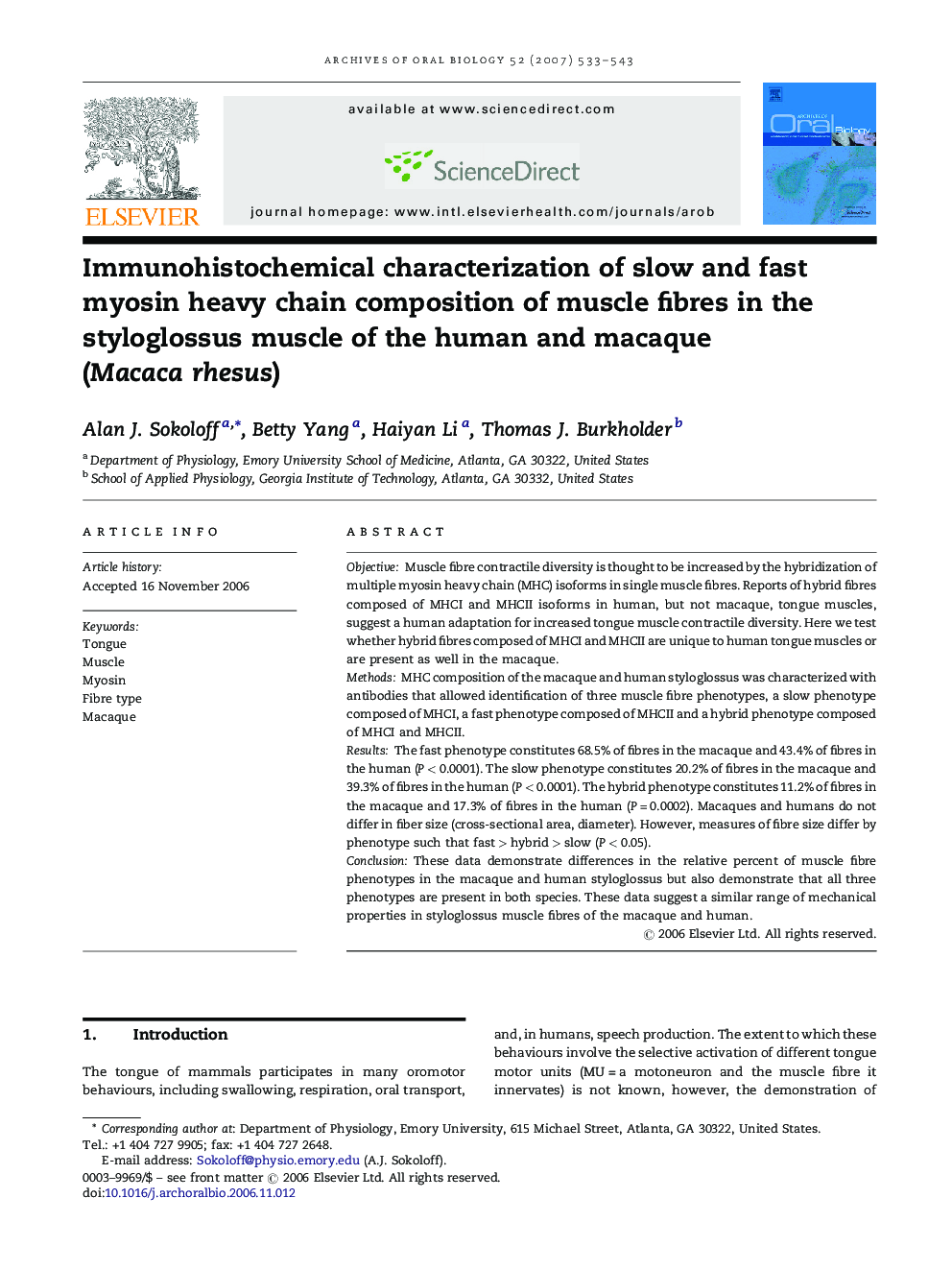| Article ID | Journal | Published Year | Pages | File Type |
|---|---|---|---|---|
| 3121595 | Archives of Oral Biology | 2007 | 11 Pages |
ObjectiveMuscle fibre contractile diversity is thought to be increased by the hybridization of multiple myosin heavy chain (MHC) isoforms in single muscle fibres. Reports of hybrid fibres composed of MHCI and MHCII isoforms in human, but not macaque, tongue muscles, suggest a human adaptation for increased tongue muscle contractile diversity. Here we test whether hybrid fibres composed of MHCI and MHCII are unique to human tongue muscles or are present as well in the macaque.MethodsMHC composition of the macaque and human styloglossus was characterized with antibodies that allowed identification of three muscle fibre phenotypes, a slow phenotype composed of MHCI, a fast phenotype composed of MHCII and a hybrid phenotype composed of MHCI and MHCII.ResultsThe fast phenotype constitutes 68.5% of fibres in the macaque and 43.4% of fibres in the human (P < 0.0001). The slow phenotype constitutes 20.2% of fibres in the macaque and 39.3% of fibres in the human (P < 0.0001). The hybrid phenotype constitutes 11.2% of fibres in the macaque and 17.3% of fibres in the human (P = 0.0002). Macaques and humans do not differ in fiber size (cross-sectional area, diameter). However, measures of fibre size differ by phenotype such that fast > hybrid > slow (P < 0.05).ConclusionThese data demonstrate differences in the relative percent of muscle fibre phenotypes in the macaque and human styloglossus but also demonstrate that all three phenotypes are present in both species. These data suggest a similar range of mechanical properties in styloglossus muscle fibres of the macaque and human.
